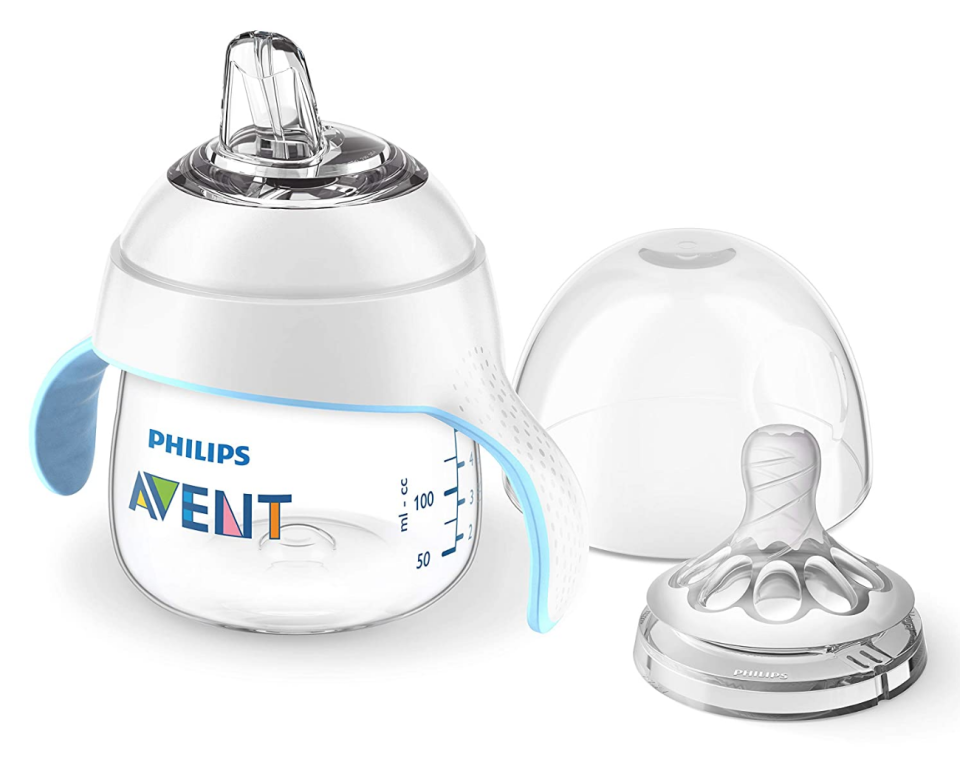The 7 Best Transitional Sippy Cups and When to Introduce Them
Infants love their breastfeeding or bottlefeeding sessions—no surprise there. But you might be caught off guard when you realize how attached you've become to them, too. And no wonder! They're predictable, easy, and, above all else, a comforting reminder that this increasingly independent child is still your baby.
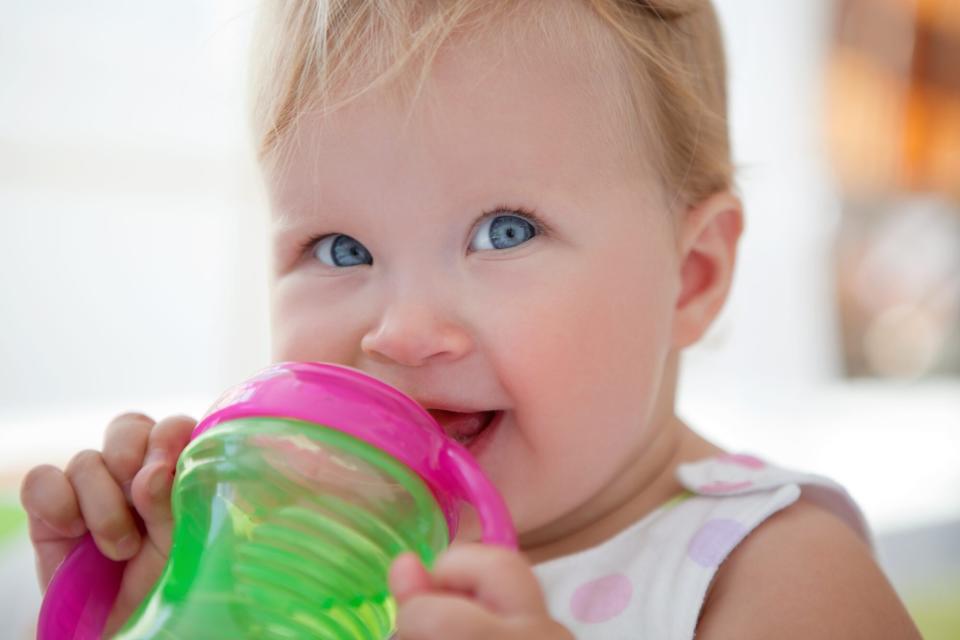
Getty Images.
Eventually, though, the time will come to bid the breast or bottle farewell. Read our guide for transitioning to sippy cups, then check out our round-up of the best options on the market today.
When to Introduce Sippy Cups
Your baby probably won't be able to hold a cup or drink solo without spilling until after age 1, but let them start practicing earlier. The ideal time to introduce a sippy cup—whether with a straw, spouted, or spoutless—is typically around 6 months old, when they start solids. They will be having a lot of new sensory, motor, and cognitive experiences when they're first eating, so it may be best to wait a week or two before adding the cup.
Also, as with all transitions, think about what else is going on in your child's life before you begin. Have they started a new daycare? Did you recently move houses? If there have been any big changes, you may want to wait a month or so before beginning the switch to a cup. Too many changes at once will make your child feel insecure and likely to cling to familiar routines and objects.
Tips for Easing the Transition
Your baby wont start drinking from the sippy cup overnight. Here are some expert-approved tips to help bridge the gap between the breast or bottle and cup.
Try out a few sippy cups.
Although there are tons of baby cups to choose from—hard- and soft-spout sippies, and those with a straw—some experts recommend spoutless sippy cups because the others may hinder feeding development. If possible, buy several types; your child may have a preference. For example, some babies prefer cups with handles (especially those who like to hold their own bottle) but others do not.
Start by offering an empty cup.
First, offer an empty cup and let your baby explore and play with it. Do this for several days so they'll be familiar with the cup before you put liquid in it. You can also explain that they're soon going to start drinking from the cup, suggests Mark L. Brenner, Ph. D., author of Pacifiers, Blankets, Bottles, and Thumbs: What Every Parent Should Know About Starting and Stopping.
Teach them to sip.
Make sure your child is seated before giving them a cup with water, breast milk, or formula (never juice at this age). Hold the cup up to their mouth and tilt it slowly so a little liquid dribbles in. Give your child time to swallow before offering more. If you put breast milk or formula (or even a smear of pureed baby food ) at the tip of a baby cup that has a short straw, your baby will taste it and probably suck the straw to get more.
Expect messes.
The first few times your baby drinks from the cup, it can be a bit messy (expect lots of drooling and dripping). Don't force your child to take more than they want, since you don't want to turn this into a power struggle. If they try to grab the cup to drink on their own, by all means, let them.
Make the cup appealing.
If you've been bottlefeeding, an easy way to do this is using the bottle for water only and saving the good stuff for the sippy cup. "If given the choice between having milk in an unfamiliar cup and water in their favorite bottle, most kids will go for the cup," explains Jennifer Shu, M.D., a Parents advisor and editor of the American Academy of Pediatrics' Baby and Child Health. You can also show them that it's fun: Take a sip from a small cup and say, "Mmm, yummy!" Your baby may just want some too.
Limit time with the sippy cup.
Once your baby likes the cup, they may want it all the time—but don't let them carry it around during the day, use it as a pacifier, or sleep with it. Constantly bathing their teeth in sugar from drinks (even breast milk!) increases the risk of tooth decay. "Nursing on a bottle's nipple throughout the day and night means your child's teeth are in prolonged contact with milk or juice, and that can cause cavities," explains Dr. Shu.
Always supervise your child.
Supervise when your baby drinks from a cup while seated. If they walk or run with a cup and fall, it could lead to mouth injuries.
Learn when to wean.
The longer you wait to wean, the more attached your baby will get to the bottle or breast—and the harder it will be for them to give it up. After your baby's comfortable with the sippy cup (about a month or so), you can begin the weaning process. If you move too quickly, they may view the cup as more of a punishment than simply a new way to drink.
Start by phasing out one midday feeding session, since babies usually eat the least at that meal and aren't as emotionally dependent upon it. Replace the feeding with a snack or a meal, including a beverage from a cup. Wait a week (or two if your baby is struggling with the transition) before eliminating another feeding. Continue phasing out one feeding per week until your child is off the bottle or breast completely. "The evening feeding should be the last to go because your kid is probably most attached to it, especially if it's a big part of his bedtime ritual," says Dr. Shu.
The Best Sippy Cups for Babies and Toddlers
Ready to start weaning your child off the breast or bottle? Of course, you could introduce them to open-top cups right away, but you'd have to deal with plenty of frustrating messes. (You better believe they'll love chucking that full cup straight across the room!) To lessen the stress, it's usually smarter—and cleaner—to choose a sippy cup designed for the transitional phase.
The best sippy cups will be easy to clean and use, made without harmful chemicals, and able to withstand spills. Keep reading for our top picks on the market today.
1. Munchkin Miracle 360 Trainer Cup
The spoutless Munchkin Miracle 360 Trainer Cup has a flat 360-degree drinking edge that allows your child to sip from anywhere on the rim, successfully mimicking an actual cup and supporting mouth muscle development. When your baby is finished drinking, the lid automatically seals so you can bid adieu to spills! Little ones 6 months and older enjoy the easy-grip handles on the BPA-free cup, while adults love that it’s top-rack dishwasher safe with no extra valves or parts.
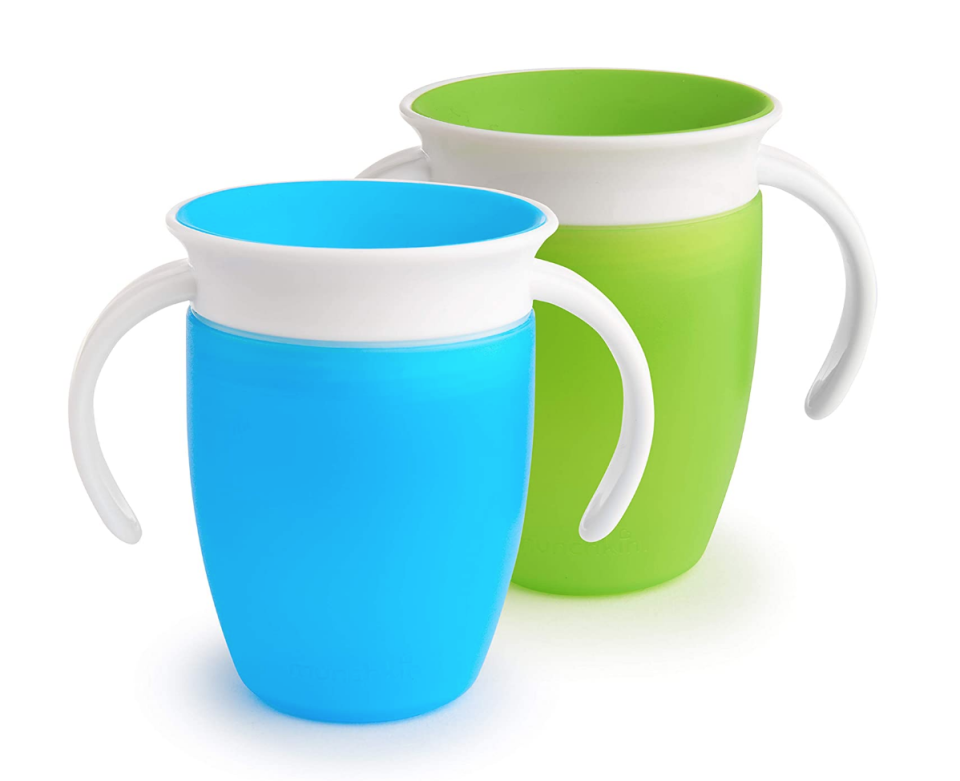
2. The First Years Take & Toss Spill-Proof Sippy Cups
You won’t believe the low cost of these top-rated sippy cups! And the budget-friendly price tag doesn’t compromise the functionality: They have a space-saving stackable design, spill-proof lids that are interchangeable with other Take & Toss products, and colorful translucent colors that let you see Baby's drinking progress. The dishwasher-safe sippy cups (with snap-on and valve-free lids) are also made without BPA, PVC, and phthalate—and they’re recyclable to boot! Definitely consider stocking up on these cups, which come in a four pack, for kids 9 months and older.
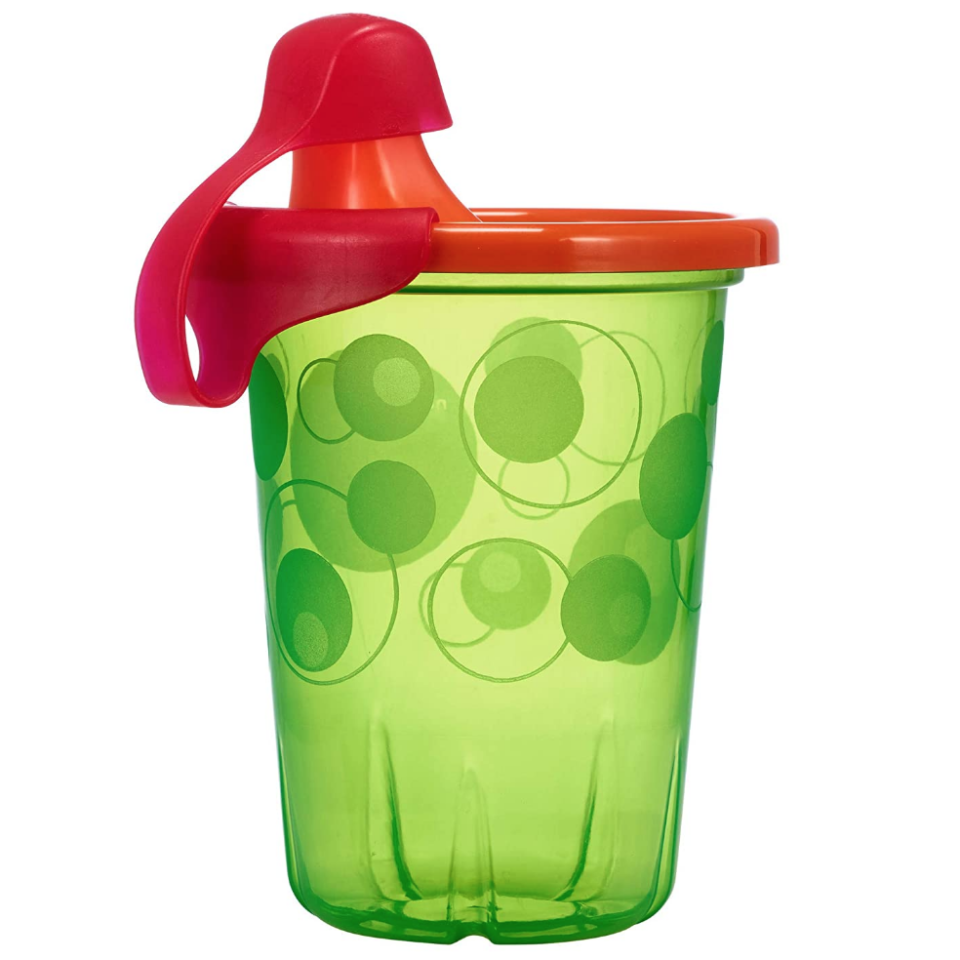
3. NUK Learner Sippy Cup
NUK's Learner Sippy Cup is jam-packed with impressive features, including a soft silicone spout that’s gentle on teeth and gums, a vent to reduce swallowed air, easy-grip removable handles, and a dishwasher-safe construction. The BPA-free and spill-proof cup is best suited for kids 6 months and up.
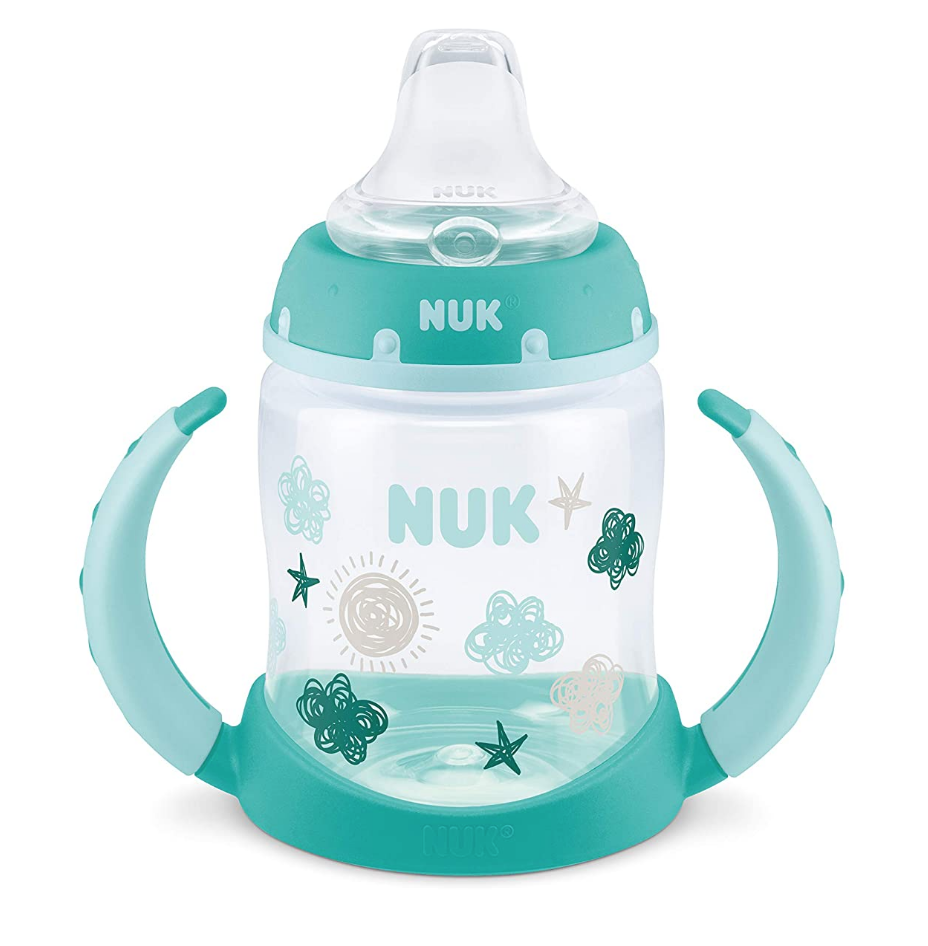
4. Oxo Tot Transitions Straw Cup with Removable Handles
This Oxo Tot Transitions Straw Cup has an almond-shaped straw that conforms to your baby’s mouth, effectively preventing spills and easing the transition from the bottle or breast. It’s also ideal for beginners because the straw valve opens when your baby’s lips touch it—and the hinged cap closes afterwards to stop leaks. With removable handles and convenient measuring marks, it’s no wonder this is one of the best straw sippy cups on the market today!
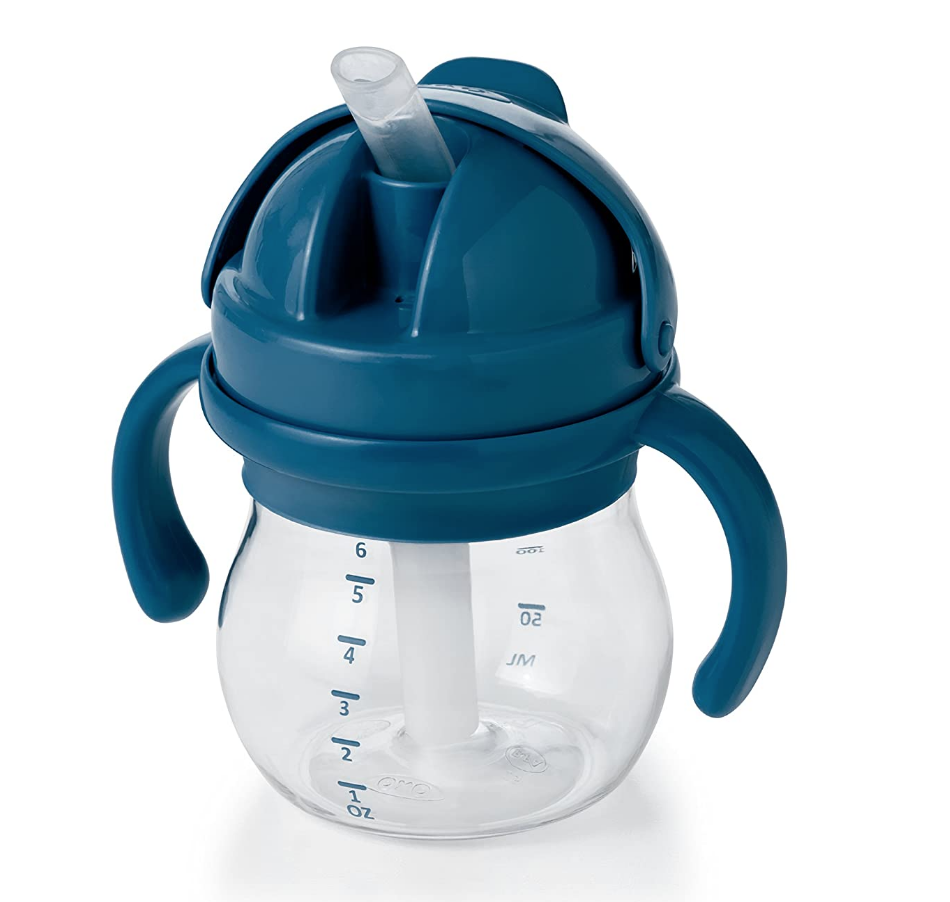
5. Nuby Two-Handle No-Spill Super Spout Grip N' Sip Cups
Bright colors aren’t the only draw of this best first sippy cup, made for babies ages 4 months and up. It has a no-spill soft silicone spout that promotes oral development, a valve that lets your baby control their drink flow, and easy-grab handles that actually get the cup to their mouth.
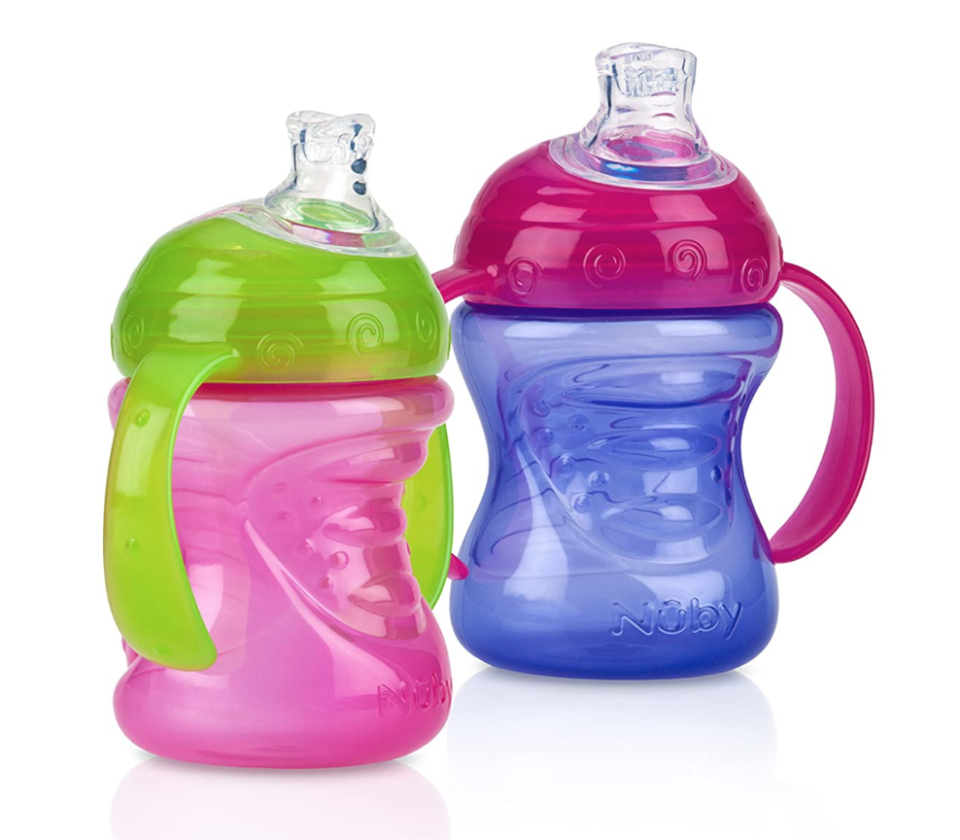
6. Munchkin LATCH Transition Cup
Designed for babies 4 months and up, depending on their readiness, this BPA-free cup has a soft silicone spout that lets your baby “latch.” An anti-colic valve prevents air bubbles to reduce gas-induced fussiness. What’s more, the sippy cup is ideal for road trips, thanks to removable handles (perfect for fitting into cup holders!) and a snug-fit lid cover.
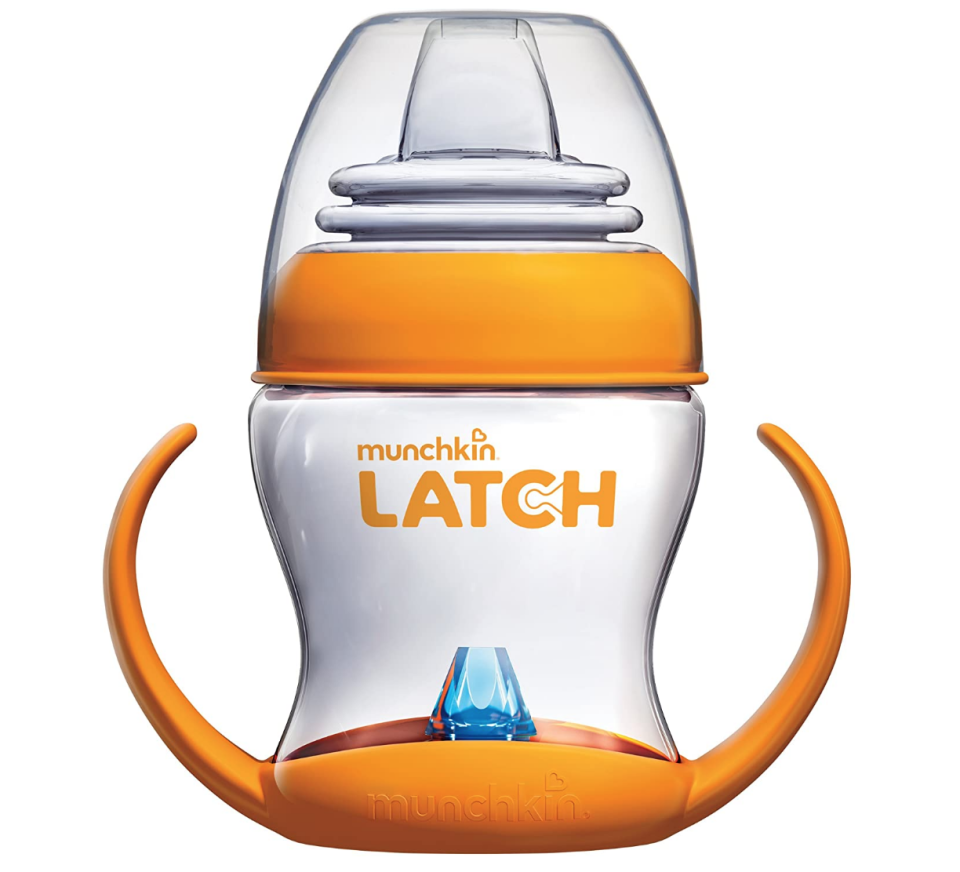
7. Philips Avent Natural Trainer Sippy Cup
Looking for the best sippy cup to transition from the bottle or breast? The Philips Avent Natural Trainer Sippy Cup—geared toward babies 4 months and up, depending on readiness—is a solid solution. It comes with both a fast-flow bottle nipple and soft silicone spout, allowing it to grow with your baby. Removable handles teach independent drinking, and a protective cap keeps everything sanitary. You can also clean the BPA-free cup in the dishwasher!
